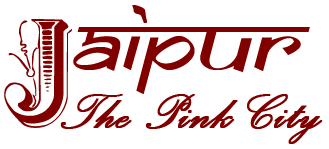
Jaipur Travel Guide
Jaipur Heritage Monuments : Albert Hall Museum
 |
Jaipur Travel Guide Jaipur Heritage Monuments : Albert Hall Museum |
|
Book Cheap Flights, Hotels |
|
|
|
|
|
Holidays >> Travel >> Things to do >> India >> Rajasthan >> Jaipur >> Heritage >> Monuments >> Albert Hall Museum Albert Hall Museum : An Industrial Art and Craft MuseumMuseum, Art, Science, Art Gallery, Art Museum, History Museum, Albert Hall Museum, Arts and Crafts Museum, Monuments in Jaipur, Hot spots for Jaipur Heritage Tour, Special Attractions in Jaipur Tour, Hotels, Cheap Flights, Holidays, Travel, Vacations, Trip Advisor, Things to do, India, Travel Agency, Air Tickets, Heritage, Jaipur, Travel Planner, Monuments, Rajasthan, Car Rentals, All Inclusive PackagesAmber Palace Group
Rich collection of Amber Palace group pottery is on display for the visitors of Albert Hall Museum of Pink City Jaipur. This pottery section of Albert Hall museum Jaipur is one of the main attractions for the tourists on Jaipur tour. Pottery Collection Room 3The Indian subcontinent is renowned for its unglazed terracotta vessels, ritual objects, votive figures, architectural relief tiles, and sculptures but the myth that there never was a vibrant indigenous glazed tradition is disputed by the objects displayed in this Gallery; those of the Albert Hall Pottery Collection. The Gallery displays outstanding examples from the traditional centers of glazed Kashi ware in North India. Rampur and Delhi, being geographically close, use the idiom of floral blue and white painting on red clay as well as the white quartz clay. Multan and Peshawar being further to the west, in the subcontinent, show the influence of architectural ornamentation and a different stylistic application of low temperature glazes. The earliest Art School in India was started at Madras; in which high fired white clay pottery was first introduced and developed in the country in the mid 19th century. The Jaipur School of Art revived, and introduced new styles and techniques in the Indigenous low temperature glazed white quartz clay pottery. One feature which is easily read in the collection is the shift in ornamentation- the all-over floral patterns slowly begin to be interspersed with animal and figurative narrative panels. The epitome of this can be seen in the highly sophisticated Ajanta Cave paintings inspired pottery that was made at the Bombay School of Art which required tremendous technical expertise, control of materials and a vision of what is meant by new pottery design. In 1866, Dr. Hunter from the Madras School of Art, received on invitation to visit Sawai Ram Singh, the Maharaja of Jaipur to survey the arts manufactures and advise on improvements.
Arrangements were made to send several teachers from Madras to teach pottery, modeling and taking casts, at the new School of Arts. Two famous students of the time were Luchman and his brother Ram Baksh who also became teachers. The School of Arts was originally intended for the sons of the artisans, but in a few years after it opened, other families were also enrolling. In 1876, a class of glazing pottery was begun. Two distinct kinds of pottery were made at the School, both fired white, but one was called stone and the other clay ware. The semi porcelainous stone pottery was introduced from Delhi. The ingredients and the process were quite different from a normal potter s clay. The feldspar was obtained from the hills near Jaipur and the marble came from Makrana on the Jodhpur border. Both the cobalt and copper oxides were found in Jaipur state itself. The clay ware was made from white clay (possibly a china clay) from the Bochara Hills, close to Jaipur. In Feb 1876, the School contributed many objects for the Exhibiton of local and indigenous articles for the Prince of Wale s visit. Four large vases were made of the Viceroy and Governor General which fetched Rs. 6000. The School was still not self supporting. Considerable improvement was recorded in the modeling and pottery class. The same system of working from nature, as in the drawing class, has been successfully introduced in the pottery department. The students were taught to model from natural objects placed before them. The white clay, found the previous year in the hills of Bochara had been used in the pottery and some of the busts made of it were found to be very superior. The pottery made in the School continued to demand a ready sale as the School had begun to make interesting looking glazed ware. Opendra Nath Sen the new principal recorded. It is the object of the School to allow the pupils to follow their oriental taste and imagination and improve on the indigenous work of this place. This practice will go a great way to revive the old art which is peculiar to our country. The glazed ware was proving most remunerative especially the glazed earthenware articles, the imitation fruit, the human figures, similar to those made in Lucknow, the white clay goblets etc. Suggested Readings for JaipurTags: Museum, Art, Science, Art Gallery, Art Museum, History Museum, Albert Hall Museum, Arts and Crafts Museum, Monuments in Jaipur, Hot spots for Jaipur Heritage Tour, Special Attractions in Jaipur Tour, Hotels, Cheap Flights, Holidays, Travel, Vacations, Trip Advisor, Things to do, India, Travel Agency, Air Tickets, Heritage, Jaipur, Travel Planner, Monuments, Rajasthan, Car Rentals, All Inclusive Packages, Photos, Images, Pictures, Jaipur the Pink City, jaipurthepinkcity.com
Comments |
|
|
|
Albert Hall Museum Page 1 | 2 | 3 | 4 | 5 | 6 | 7 | 8 | 9 | 10 | 11
Book Train Tickets